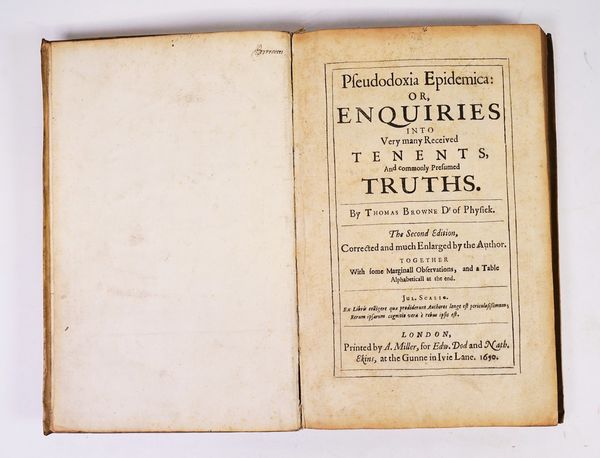BROWNE, Thomas (1605-82). Pseudodoxia epidemica.
| Estimate: | £150 - £250 |
| Hammer price: | £320 |
BROWNE, Thomas (1605-82). Pseudodoxia epidemica: or, Enquiries into Very many Received Tenents, and commonly Presumed Truths … The Second Edition, Corrected and much Enlarged by the Author. London: “Printed for A. Miller, for Edw. Dod and Nath. Ekins, at the Gunne in Ivie Lane,” 1650. Folio (292 x 185mm). Initials and ornaments (variable mainly light spotting, staining and browning, a few rust-holes and darker spots). Contemporary vellum, yapp edges (stained). Provenance: old signature on front free endpaper scribbled out; G. L. J. Engle (modern label); from the Library of the late Sir George Engle. This endlessly fascinating work, sometimes known as ‘Vulgar Errors’, sought to confute widely-held beliefs and superstitions, despite the fact that the author was himself a believer in sorcery and witchcraft. "[It] now seems more quaint than scientific, but it was practical in an age bound by traditional fallacies. Its purpose was to induce inquiries into popular delusions; for example, Browne denies that elephants lack knees, that crystal is hard ice, and that rubbing with garlic inhibits a magnet's power to attract" (DSB). The work is also notable for being the first in English to use the term ‘electricity’; see Chapter IV in Book 2 titled "Of bodies Electricall." Garrison-Morton 10032; Grolier 107; Heirs of Hippocrates 487 (citing 1st ed. of 1649); Keynes 74; Wing B5160; Wellcome II, p.253.


